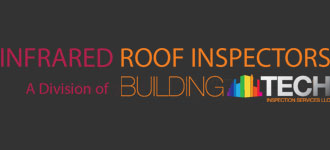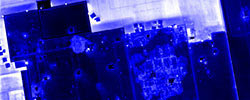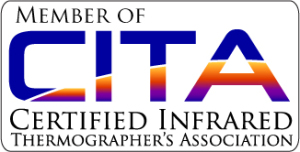BUILDINGTECH INSPECTION SERVICES, LLC is an inspection firm that focuses on commercial, residential and light industrial inspection services for due diligence inspections, insurance driven surveys, and claims assist, construction investigations also work with engineering firms. We service mostly New Jersey, New York, Pennsylvania, and Connecticut in some cases we travel all over the USA. On the residential side we service only NJ home inspections of 1-4 Family dwelling units. An infrared inspections service covers all 50 states.
Abstract:
This article is about how infrared inspection of flat or low sloped insulated roofing systems, building envelope and electrical systems not normally part of the due diligence acquisition surveys or( PCA ) Property Condition Assessment. In some cases the roof is one of the largest assets of the building. Infrared Thermography is nondestructive approach to evaluating the condition of building or systems components, Infrared thermography has many uses in many industries, but certified infrared thermographer can use this noninvasive procedure to provide information to their clients that convention methods cannot deliver. The US army Corps of Engineers in the 1960s they started research on infrared roof and building surveys. In those times they infrared scanners with two rotating mirrors and mounted on air planes. The equipment were very large not compact what’s in today’s market place. Then in 1970s the liquid nitrogen fill infrared imagers came out. US army Corps of Engineers 1978 they published a “special report” standard for conducting infrared roof moisture surveys. Which is by today’s ASTM C1153 Standard Practice for Location of Wet Insulation in Roofing Systems Using Infrared Imaging, Infraspection Institute Standard for Infrared Inspection of Insulated Roofs are base from those of the US army Corps of Engineers.
The Benefit of Infrared Roof Inspections:
BUILDINGTECH INSPECTION SERVICES was contracted to conduct two infrared roof inspection one building EPDM and the 2nd building has BUR roofing and TPO on the upper elevation. The Buildings are location in Stamford, Connecticut. One the single ply roofing systems TPO and EPDM we used Mid wave imager and the BUR long wave imager.
The cost to replace these roofs estimated cost $200,000 per building. The first building with BUR roofing system was determined that the roof would need to be torn off and replaced. The 2nd building repairs estimated $6,000-$8,000.
The purchaser negotiated the roof during the contingency period and reduced the price of $180,000 from the purchase price. Infrared thermal imaging of the roof is a preferred method since it covers the entire roof that’s walked on.
The post aerial drone images taken after the roof moisture scan show the bigger picture of the condition of the roofs.
The conventional walking around looking for soft areas or probing around could be missed or under stated. Infrared walk on roof inspections with marking paint is one the preferred methods to conducting moisture surveys. The marking the roof and using NDT moisture meters on nonconductive roof membranes for some type of verification. The core cuts or probes are best it eliminates false positives. The infrared roof moisture inspection sometimes don’t work out in colder climates or raining seasons since this type of infrared moisture surveys are weather dependent. Depending on the acquisition of buildings and types of roofs and how far they are located from each other in some cases it can be don’t in one night or few nights.
Key words: Infrared, Roof, Thermography, Roof Scan, Moisture Survey, Infrared roof testing



 Roof maintenance and inspection is a multi-billion dollar industry. Learn the benefits of infrared technology and why you should have your roof inspected.
Roof maintenance and inspection is a multi-billion dollar industry. Learn the benefits of infrared technology and why you should have your roof inspected. Aerial infrared roof inspection offers many great benefits for large commercial and industrial complexes. Learn the details of how this technology can help you.
Aerial infrared roof inspection offers many great benefits for large commercial and industrial complexes. Learn the details of how this technology can help you.






